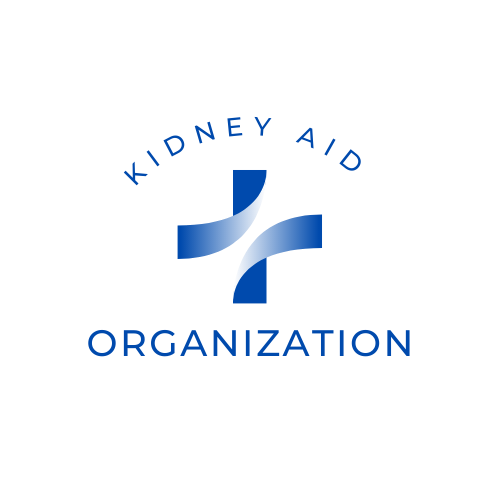Kidney disease, a chronic condition characterized by a gradual loss of kidney function over time, affects millions of people worldwide. The management of kidney disease involves a combination of medications, lifestyle modifications, and, importantly, dietary changes. Among the dietary considerations, the choice of protein sources is crucial, as certain proteins can exacerbate the condition, while others can be more beneficial. This article explores the role of the tuna sandwich in the diet of individuals with kidney disease, examining its nutritional profile, potential benefits, and risks.
Nutritional Profile of Tuna
Tuna is a popular seafood known for its rich nutritional content. It is an excellent source of high-quality protein, essential omega-3 fatty acids, vitamins, and minerals. The protein content in tuna is particularly notable, as it provides the essential amino acids necessary for various bodily functions. Additionally, tuna is low in saturated fat and contains beneficial omega-3 fatty acids, which have anti-inflammatory properties and are beneficial for heart health. Tuna is also rich in vitamins such as vitamin D and B vitamins (B12, niacin, and riboflavin), and minerals like selenium and magnesium. Vitamin D is essential for bone health and immune function, while B vitamins play crucial roles in energy metabolism and the maintenance of the nervous system. Selenium is an important antioxidant, and magnesium is involved in numerous biochemical reactions in the body. However, it's important to note that tuna can also contain high levels of mercury, a heavy metal that can be harmful in large amounts. This is particularly concerning for individuals with compromised kidney function, as their bodies may have difficulty excreting mercury efficiently. Therefore, while tuna is nutritious, its consumption needs to be moderated, especially in the context of kidney disease.The Role of Protein in Kidney Disease Management
Protein intake is a critical factor in managing kidney disease. While protein is essential for maintaining muscle mass and overall health, excessive protein intake can strain the kidneys, particularly in individuals with reduced kidney function. This is because the kidneys are responsible for filtering waste products generated from protein metabolism. In the context of kidney disease, it is often recommended to limit protein intake to reduce the workload on the kidneys and slow the progression of the disease. Tuna, being a high-protein food, needs to be consumed with caution. For individuals with early-stage kidney disease, moderate consumption of tuna may be acceptable as part of a balanced diet. However, for those with advanced kidney disease or undergoing dialysis, the protein needs might be higher, but the type and amount of protein should be carefully managed under medical supervision.Benefits of Tuna for Kidney Health
Despite the need for caution, tuna can offer several benefits for individuals with kidney disease when consumed appropriately. The omega-3 fatty acids in tuna have been shown to reduce inflammation and may help in managing some complications associated with kidney disease, such as cardiovascular issues. Omega-3 fatty acids can also help lower blood pressure and reduce the risk of heart disease, which is a common concern for individuals with kidney disease. Moreover, the vitamin D content in tuna can be beneficial, as individuals with kidney disease often have lower levels of this vitamin due to impaired kidney function, which affects the activation of vitamin D. Adequate vitamin D levels are crucial for bone health and overall well-being.CKD-Friendly Tuna Recipes
Chronic kidney disease (CKD) requires a specialized diet to manage symptoms and slow disease progression. This includes careful selection of ingredients, particularly protein sources like tuna, which is rich in omega-3 fatty acids and low in saturated fat. Here, we present three CKD-friendly tuna recipes that are delicious, nutritious, and tailored to meet the dietary needs of individuals with CKD.Recipe 1: Tuna and Avocado Salad
Ingredients
- 1 can (5 ounces) low-sodium light tuna, drained
- 1 ripe avocado, diced
- 1 small cucumber, diced
- 1/4 cup red onion, finely chopped
- 1 tablespoon fresh lemon juice
- 1 tablespoon olive oil
- Freshly ground black pepper to taste
- Fresh parsley or cilantro for garnish
Instructions
- In a medium bowl, combine the drained tuna, diced avocado, cucumber, and red onion.
- In a small bowl, whisk together the lemon juice, olive oil, and black pepper.
- Pour the dressing over the tuna mixture and gently toss to combine.
- Garnish with fresh parsley or cilantro before serving.
- Serve immediately or refrigerate for up to 2 hours before serving.
Nutritional Information (per serving)
- Calories: 250
- Protein: 18g
- Carbohydrates: 10g
- Fat: 17g
- Sodium: 200mg
- Potassium: 500mg
- Phosphorus: 150mg
Recipe 2: Tuna and Vegetable Stuffed Bell Peppers
Ingredients
- 4 medium bell peppers, tops cut off and seeds removed
- 1 can (5 ounces) low-sodium light tuna, drained
- 1/2 cup cooked quinoa (unsalted)
- 1/2 cup zucchini, finely chopped
- 1/2 cup carrots, finely chopped
- 1/4 cup red onion, finely chopped
- 1 tablespoon olive oil
- 1 teaspoon dried oregano
- Freshly ground black pepper to taste
- Fresh basil or parsley for garnish
Instructions
- Preheat the oven to 375°F (190°C).
- In a large bowl, combine the drained tuna, cooked quinoa, zucchini, carrots, red onion, olive oil, oregano, and black pepper.
- Stuff each bell pepper with the tuna mixture and place them in a baking dish.
- Cover the baking dish with foil and bake for 25-30 minutes, until the peppers are tender.
- Garnish with fresh basil or parsley before serving.
Nutritional Information (per serving)
- Calories: 220
- Protein: 15g
- Carbohydrates: 20g
- Fat: 9g
- Sodium: 180mg
- Potassium: 700mg
- Phosphorus: 180mg
Recipe 3: Tuna and Herb Wraps
Ingredients
- 1 can (5 ounces) low-sodium light tuna, drained
- 1/4 cup plain Greek yogurt (low phosphorus option)
- 1 tablespoon fresh lemon juice
- 1 teaspoon Dijon mustard (low sodium)
- 1 tablespoon fresh dill, chopped
- 1 tablespoon fresh parsley, chopped
- 1/4 cup cucumber, diced
- 1/4 cup celery, diced
- 4 large lettuce leaves (such as romaine or butter lettuce)
- Freshly ground black pepper to taste
Instructions
- In a medium bowl, combine the drained tuna, Greek yogurt, lemon juice, Dijon mustard, fresh dill, parsley, cucumber, celery, and black pepper.
- Mix until well combined.
- Spoon the tuna mixture onto the center of each lettuce leaf.
- Roll the lettuce leaf around the filling to form a wrap.
- Serve immediately or refrigerate for up to 2 hours before serving.
Nutritional Information (per serving)
- Calories: 180
- Protein: 20g
- Carbohydrates: 5g
- Fat: 8g
- Sodium: 160mg
- Potassium: 450mg
- Phosphorus: 160mg
Risks Associated with Tuna Consumption in Kidney Disease
While there are benefits to consuming tuna, there are also potential risks, particularly concerning its mercury content. Mercury exposure can lead to neurological and developmental problems and can be particularly harmful to individuals with compromised kidney function. It's essential to choose tuna varieties that are lower in mercury, such as light tuna, and to limit the overall intake to reduce the risk of mercury accumulation. Additionally, some forms of tuna, especially canned varieties, can be high in sodium. Excessive sodium intake can exacerbate hypertension and lead to fluid retention, both of which are detrimental to kidney health. Therefore, it's important to select low-sodium options and to rinse canned tuna to reduce sodium content further.Testimonials and Real-Life Experiences
Many individuals with kidney disease have shared their experiences with dietary adjustments, including the incorporation of tuna into their diets. For instance, John, a patient with stage 3 chronic kidney disease, found that including moderate amounts of tuna in his diet helped him maintain his protein intake without significant adverse effects. Under the guidance of his dietitian, John consumed tuna sandwiches made with low-sodium bread and plenty of vegetables, ensuring a balanced and nutritious meal. Another patient, Maria, who is on dialysis, incorporated tuna into her diet after discussing with her healthcare provider. She found that the omega-3 fatty acids in tuna helped reduce her inflammation markers and improved her overall well-being. Maria emphasized the importance of choosing the right type of tuna and being mindful of portion sizes.Scientific Studies on Tuna and Kidney Disease
Several scientific studies have explored the impact of fish consumption, including tuna, on kidney health. A study published in the Journal of Renal Nutrition examined the effects of omega-3 fatty acids on kidney function and inflammation in patients with chronic kidney disease. The study found that omega-3 supplementation, which can be obtained from fish like tuna, was associated with reduced inflammation and improved kidney function markers. Another study in the Clinical Journal of the American Society of Nephrology investigated the dietary patterns of individuals with chronic kidney disease. The researchers found that a diet rich in fish, including tuna, was linked to better cardiovascular health outcomes, which is critical for individuals with kidney disease, given their elevated risk of heart-related issues.Practical Tips for Including Tuna in a Kidney-Friendly Diet
For those with kidney disease looking to include tuna in their diet, here are some practical tips:- Choose Low-Mercury Tuna: Opt for light tuna over albacore or other high-mercury varieties.
- Limit Portion Sizes: Keep portions moderate, typically around 3-4 ounces per serving.
- Select Low-Sodium Options: Use fresh tuna or low-sodium canned tuna to reduce sodium intake.
- Balance with Vegetables: Include plenty of vegetables in your tuna sandwich to increase fiber and nutrient intake.
- Consult a Dietitian: Work with a healthcare provider or dietitian to tailor your diet to your specific needs and stage of kidney disease.
Conclusion
In conclusion, a tuna sandwich can be a part of a kidney-friendly diet when consumed in moderation and with careful consideration of its nutritional profile. The high-quality protein, omega-3 fatty acids, and essential vitamins and minerals in tuna can offer benefits, particularly in managing inflammation and supporting overall health. However, it is crucial to be mindful of the potential risks, including mercury content and sodium levels, and to consult with healthcare professionals to ensure that tuna is incorporated in a way that aligns with individual health needs and dietary restrictions. The management of kidney disease requires a holistic approach, and dietary choices play a significant role in supporting kidney health. By making informed choices and working closely with healthcare providers, individuals with kidney disease can enjoy a varied and nutritious diet that includes foods like tuna, enhancing their quality of life and overall health outcomes.
Are you tired of living under the shadow of kidney disease? Are you yearning for a life free from the shackles of dialysis, kidney failure, and the looming threat of kidney transplants? If so, you're in the right place at the right time. Imagine waking up every morning with boundless energy, feeling rejuvenated and ready to take on the day. Envision a life where your kidneys are functioning optimally, and you no longer dread the burdensome routines of dialysis sessions. The Kidney Disease Solution Program is here to turn that vision into reality for you.


